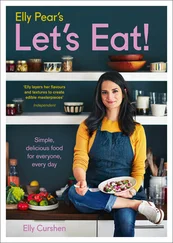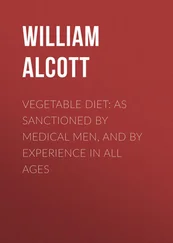Although presentation is not important to a small baby, variety is. If babies are given the same pale purée at every meal, the chances are that when they are eventually offered carrot or avocado they will be less willing to try it. Habits are formed very early, so offering different colours and flavours at the beginning helps keep lots of options open. Feeding children is very different from feeding adults. Feeding a small baby is about anticipating and satisfying a physical need, whereas the adults that I feed in restaurants are not necessarily hungry at all. Adults appreciate that food is a pleasure and that taste is a sensory experience. Whether they are hungry or not, having dinner at the Ivy is an enjoyable thing to do. With Ellie and Lydia, however, I learned the hard way that, unless they were hungry, the effort of producing a meal for them was wasted, no matter how good the food was. Timing is crucial in a restaurant but it is even more important with a small baby.
From about seven months, the girls began to learn how to feed themselves, and mealtimes became very messy. We were never sure how much food they actually swallowed because most of it seemed to end up on the floor, but they were healthy and growing so we didn’t worry. Things became more interesting the older they got. By the time they were tucking into finger foods, like pieces of bread and fruit, and enjoying soft-textured dishes such as risotto, mashed vegetables, fish pie and shepherd’s pie, there was very little difference between what they liked and what we liked. I’ve always been quite partial to nursery food, so cooking separate meals for them seemed unnecessary. I would cook a simple butternut squash risotto for the girls, and finish it off with butter, salt and pepper for Suzie and myself. It seemed like common sense to cook for the whole family at once rather than cater for two separate meals – I had to cook a ‘second sitting’ at the restaurant and I certainly didn’t intend to start doing it at home as well.
However, as Ellie and Lydia became more independent, feeding them became less straightforward. By the time they were toddlers they had worked out that mealtimes were an opportunity to assert themselves. In retrospect I suppose Suzie and I made all the obvious mistakes. We really wanted them to eat and they soon cottoned on to the fact that if they refused to eat something they would eventually be offered an alternative. Because there were two of them, despite our best intentions their combined demands would send us running to the fridge to try and find something more acceptable, when in fact if they had been hungry they would probably have eaten the first dish anyway. Snacking was part of the problem. Toddlers use up a lot of energy but if they are given ‘something to keep them going’ often enough they won’t be able to eat a proper meal. So we tried to exert a bit of ‘snack control’ to ensure the twins were hungry at mealtimes. If they then rejected something it was likely to be because they genuinely disliked it rather than because they were being fussy or just weren’t hungry.
For many parents, problems can arise as soon as their children have their first taste of convenience foods. The simple answer, of course, is to steer well clear of them but nowadays there is such a strong assumption that children should eat special ‘children’s foods’ (despite the fact that these are often packed with sugar and additives) that they can be difficult to resist. Children are frequently offered these foods outside the home anyway and they usually love them.
So gradually ‘child-friendly’ processed, prepacked, flavour-enhanced convenience foods, loaded with additives and preservatives, creep into the fridge. Now there is very little wrong with an occasional meal of fish fingers, boiled potatoes, peas and ketchup but if any food appears too frequently in a child’s diet it is at the expense of another. The child becomes wary of other types of food and getting them to eat a varied diet becomes difficult.
It is so much easier to persuade children to accept new flavours and foods if they are given a wide experience of new textures and tastes in their first year and are never given the option of eating rubbish in the first place. I know it is virtually impossible to keep them away from junk food indefinitely, but in the home at least you can make a rule that there is only good, unprocessed food on offer. If kids are hungry enough they will eat anything, but when they are given the choice between an apple and a packet of sweets, the sweets win every time. The best solution is to offer them a choice between an apple and a banana instead.
The range of foods children are offered is significant. If they are offered only ten different types of food, you can be pretty sure that they will refuse three and moan about two. If they are offered 50 types of food, even if they refuse 25 they are still eating a decent variety and will be getting a better nutritional balance.
Manufacturers have successfully exploited the significant role that packaging plays in determining whether a food product gets into the shopping trolley or not. Yoghurts are an extreme example. Once considered to be healthy, they are now just an extension of the sweetie counter, with lots of sugar, chemical additives, and cartons that feature children’s favourite television characters. Even apples come wrapped in Mister Men packaging. Trying to get around the supermarket with small children is a nightmare if you don’t want to end up with a trolley full of junk. When I am shopping with Ellie and Lydia I usually give them a bag of grapes to chomp on, which lasts until we get past the rubbish through to the fresh bread. Then I get a baguette and they break the ends off and chew on those. On a good day, this plan will get me to the checkout without any whingeing.
Because food plays such an important part in my life, I am probably more pushy than most when it comes to what my children eat but I do realise that there’s no point having unrealistic expectations. Like most children their age, Ellie and Lydia have very strong likes and dislikes, and just because I want them to acquire a taste for a particular food doesn’t mean they will. I never force them to eat anything because it would probably be counterproductive but I do insist that they try something before they tell me they don’t like it. Letting them take charge in the kitchen is a good way of getting them to try foods they might otherwise reject. Neither Ellie nor Lydia used to like eggs very much until I got them to help me make coddled eggs. They stood on chairs to crack the eggs into little pots, then watched them cook in the oven, and were keen to eat them when they were ready. I like to let them help me squeeze fresh orange juice, too, so they see how much mess and effort is involved in producing a small amount. Because there isn’t much they savour it, and when we compare it to the processed taste of orange squash they can see how far removed the real thing is from its commercial cousin.
If there is only a tiny amount of something available it tends to seem much more desirable to them, so serving very small portions of any food that has taken time to prepare is a good tactic. Adults often forget that a small child’s stomach is only the size of their clenched fist, so they can’t eat very big portions. It is better to serve them less and let them ask for more than to load their plate.
When I want Ellie and Lydia to taste something unusual I tend not to offer it to them at mealtimes. Instead I make a distinction between ‘tasting’ and ‘eating’, with tasting as a no-pressure opportunity to explore flavour. Some children enjoy doing a blindfold quiz, where they have to guess what they are eating and say whether they like it. It’s easiest to start with teaspoons of flavoured liquids – anything from elderflower to Marmite. Sometimes we do food comparisons, when, for example, I buy three types of tomato and get the twins to help me choose which one tastes best.
Читать дальше












